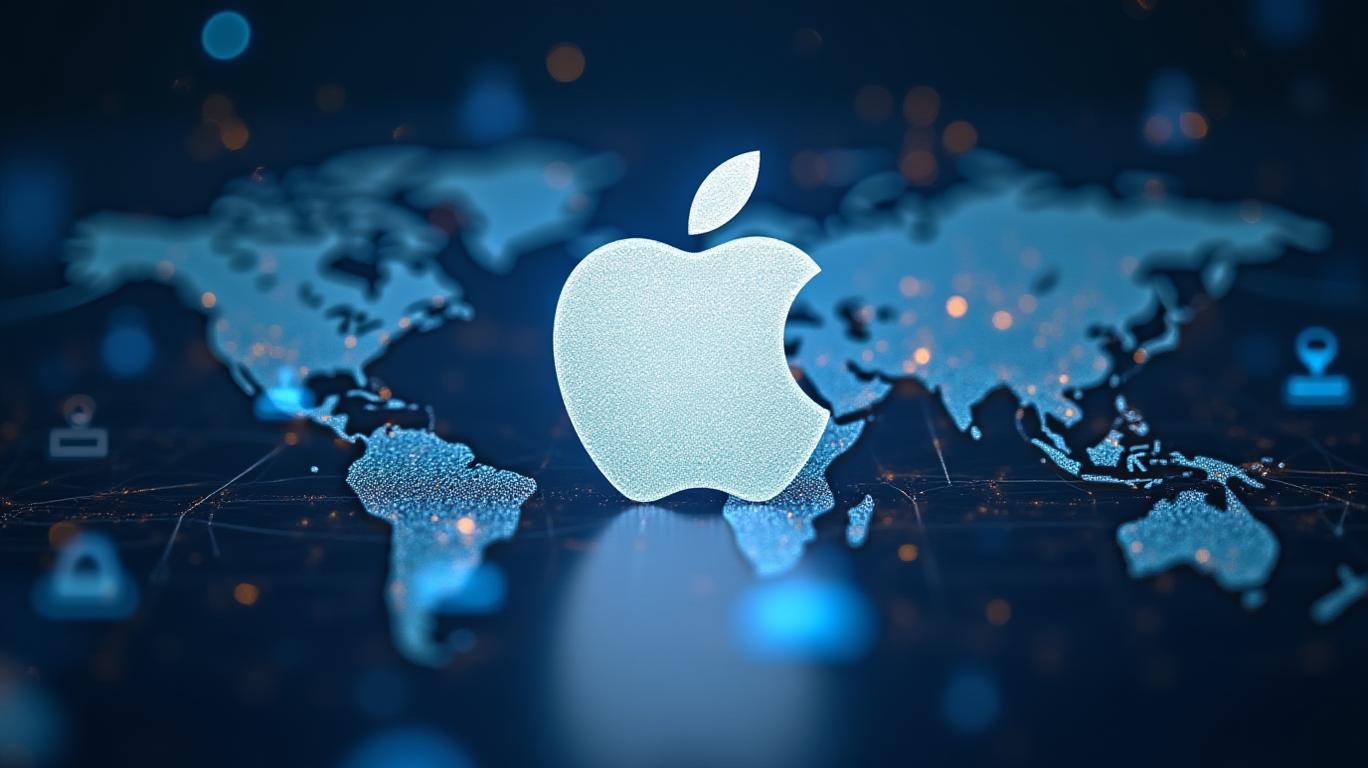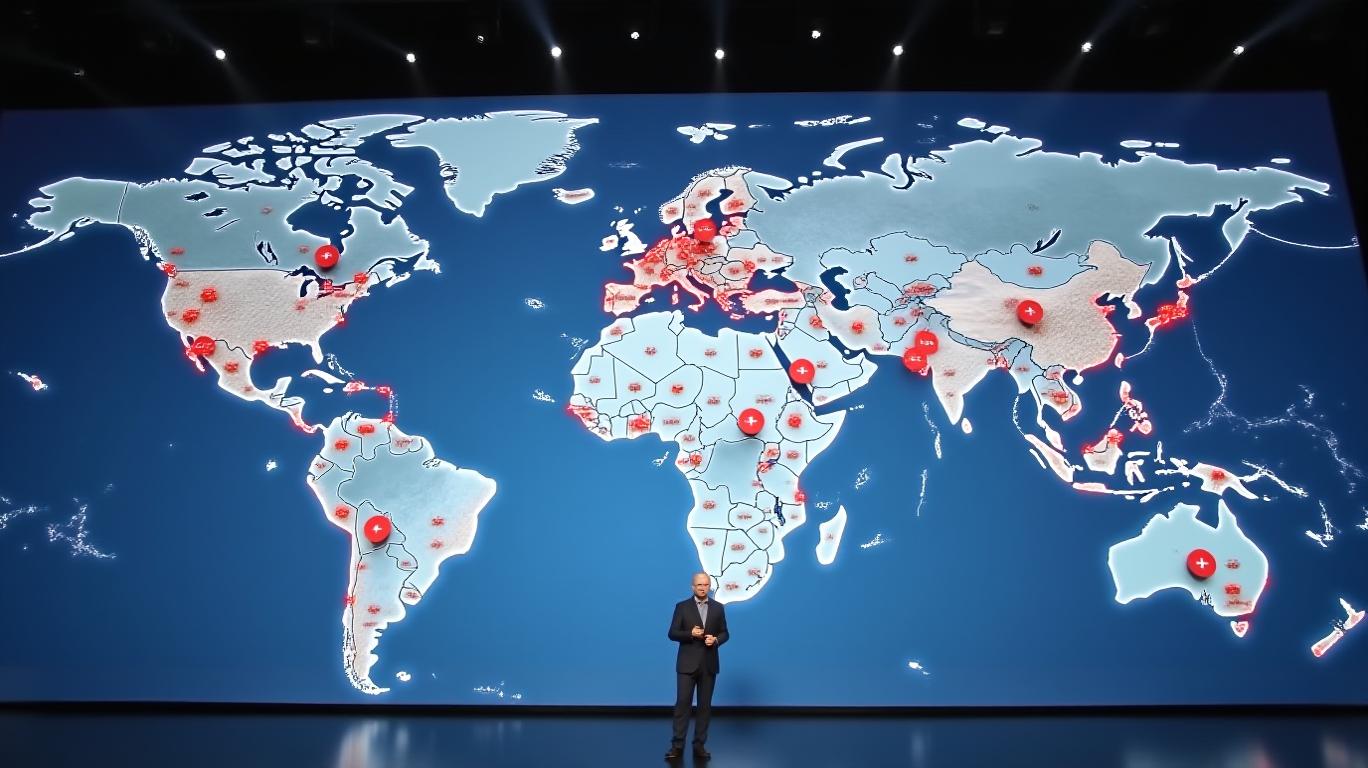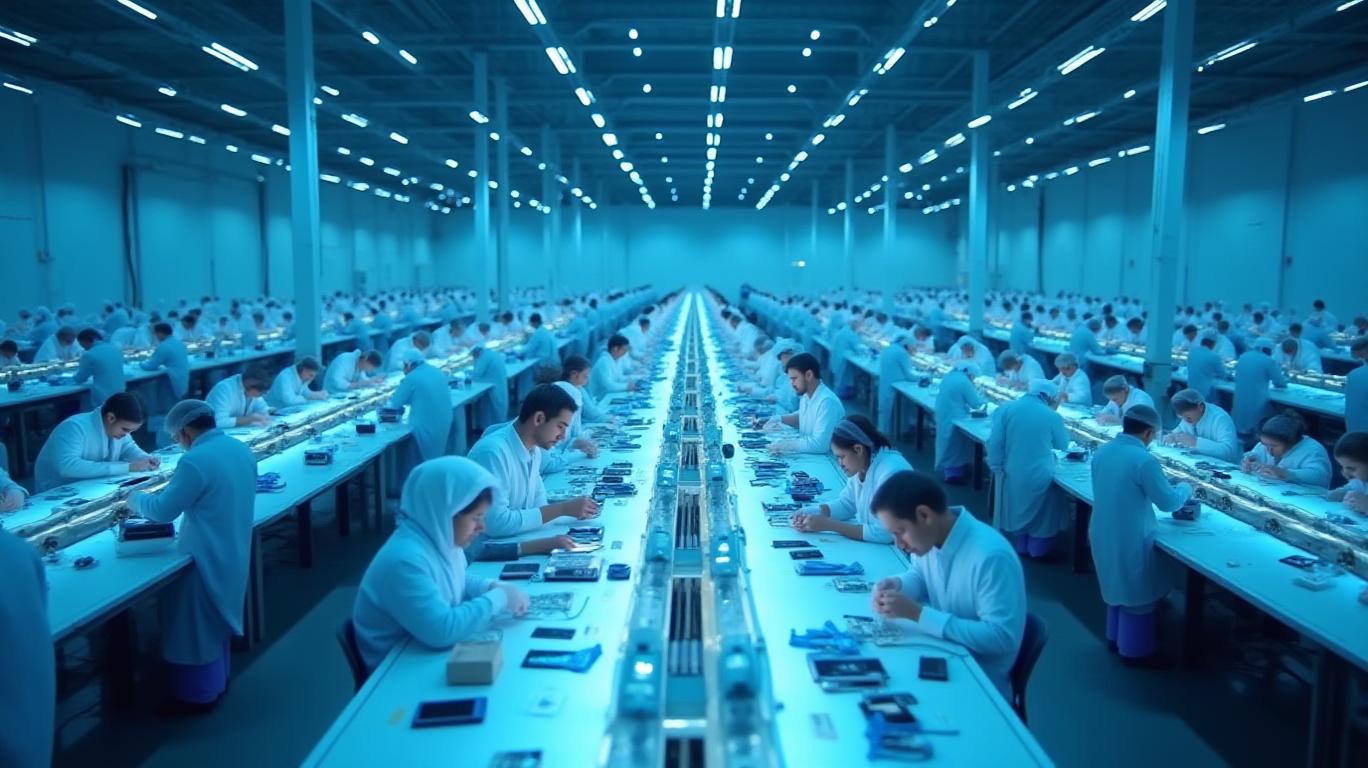Apple's Tariff Tightrope: Can Buyback Cuts and Supply Chain Shifts Save the Bottom Line?
Apple’s fiscal 2025 has become a high-stakes balancing act. Facing a potential $900 million tariff-driven cost surge in Q2, the company slashed its buyback authorization by $10 billion—its most significant retreat from share repurchases in years. Meanwhile, its supply chain pivot to India and Vietnam, while necessary, has introduced new complexities. The question now is: Can Apple navigate these headwinds without sacrificing its financial moat?

The Tariff Tsunami: Costs and Consequences
Apple’s Q2 2025 results underscored the gravity of its tariff exposure. CEO Tim Cook revealed that U.S. tariffs on Chinese imports could add $900 million to costs in the June quarter alone, driven by rates as high as 145% before partial exemptions. While smartphone exemptions reduced this burden to 20%, semiconductors remain vulnerable to future hikes—a critical vulnerability, as chips account for roughly 25% of an iPhone’s cost.
The financial toll is already visible. Analysts estimate that tariffs could shrink gross margins to 45.5%–46.5% in Q3 2025, down from 47.05% in Q1.
The Buyback Cut: Prudent Caution or Admission of Weakness?
Apple reduced its stock buyback authorization to $100 billion for 2025, down from $110 billion in 2024—a $10 billion retreat. While the company still returned $29 billion to shareholders in Q2 (via dividends and buybacks), the cut signals a strategic shift. CFO Kevan Parekh emphasized that cash preservation is now prioritized over aggressive repurchases, given the “uncertain geopolitical landscape.”
This decision isn’t without precedent. In 2019, Apple halted buybacks amid trade wars, only to resume them later. Today’s move reflects similar caution. With $133 billion in cash and $137.53 billion in EBITDA, Apple remains financially resilient. However, its $264.4 billion in liabilities—a record—hints at rising capital demands for supply chain reconfiguration and semiconductor investments.
Supply Chain Surgery: India and Vietnam’s Growing Role
Apple’s production pivot is ambitious but fraught with hurdles. By Q2 2025, “the majority” of U.S.-bound iPhones were manufactured in India—a shift that costs 5–8% more than Chinese production. However, India still accounts for just 2–3% of global iPhone output. Scaling to 50% by 2026, as planned, would require massive investment in logistics and infrastructure.
Vietnam is the other front: iPads, Macs, and Apple Watches are moving there to avoid tariffs. Yet both regions face challenges. Air freight for urgent shipments could add $100–$200 per iPhone in costs, while China’s retaliatory export bans on rare earth minerals (critical for manufacturing) complicate global operations.
Analysts Split: Bulls See Resilience, Bears Spot Cracks
The investment community is divided. JPMorgan raised its Q2 revenue forecast to $95.8 billion, citing “pull-forward demand” ahead of tariffs, and maintained an “Overweight” rating with a $245 price target. Goldman Sachs highlighted Apple’s $137.5 billion EBITDA as a buffer, while UBS noted its “financial firepower” could absorb near-term margin hits.
Bears, however, see long-term risks. Morgan Stanley slashed its price target to $235 from $275, warning of AI delays and margin erosion. Barclays predicted a 15% stock decline if tariffs force price hikes, which could deter buyers in a slowing economy.
The Legal and Regulatory Overhang
Apple’s legal battles add to the strain. A federal judge ruled it in contempt for violating a 2021 court order in the Epic Games lawsuit, paving the way for Fortnite’s return to the App Store. Apple’s appeal faces an uphill climb, potentially opening it to billions in antitrust damages.
Meanwhile, China’s rare earth restrictions and U.S. semiconductor export controls threaten to deepen supply chain bottlenecks. These geopolitical pressures could prolong Apple’s margin squeeze, even if tariffs ease.
Conclusion: A Tightrope Walk with Safety Nets
Apple’s 2025 story is one of calculated gambles. Its $100 billion buyback authorization and $0.26 dividend hike show it remains shareholder-friendly, but the $10 billion cut underscores the need to preserve liquidity. The company’s financial might—$137.5 billion EBITDA, 46.5% gross margins—provides a safety net, even as margins dip.
However, risks loom large. A full-scale semiconductor tariff would add billions in costs, while India’s manufacturing ramp faces years of growing pains. Investors should weigh Apple’s cash reserves and services resilience against its China dependency and regulatory overhang.
In the short term, Apple’s stock—down 15% year-to-date—offers a buying opportunity for long-term holders. But for bulls, the path to $245+ hinges on tariff resolution, supply chain execution, and a rebound in Greater China sales. The tightrope is narrow, but Apple’s history of innovation suggests it may still land safely—if it can keep its balance.

_442a2dcc1749832873286.jpeg)
_e68fac6d1749831664430.jpeg)







